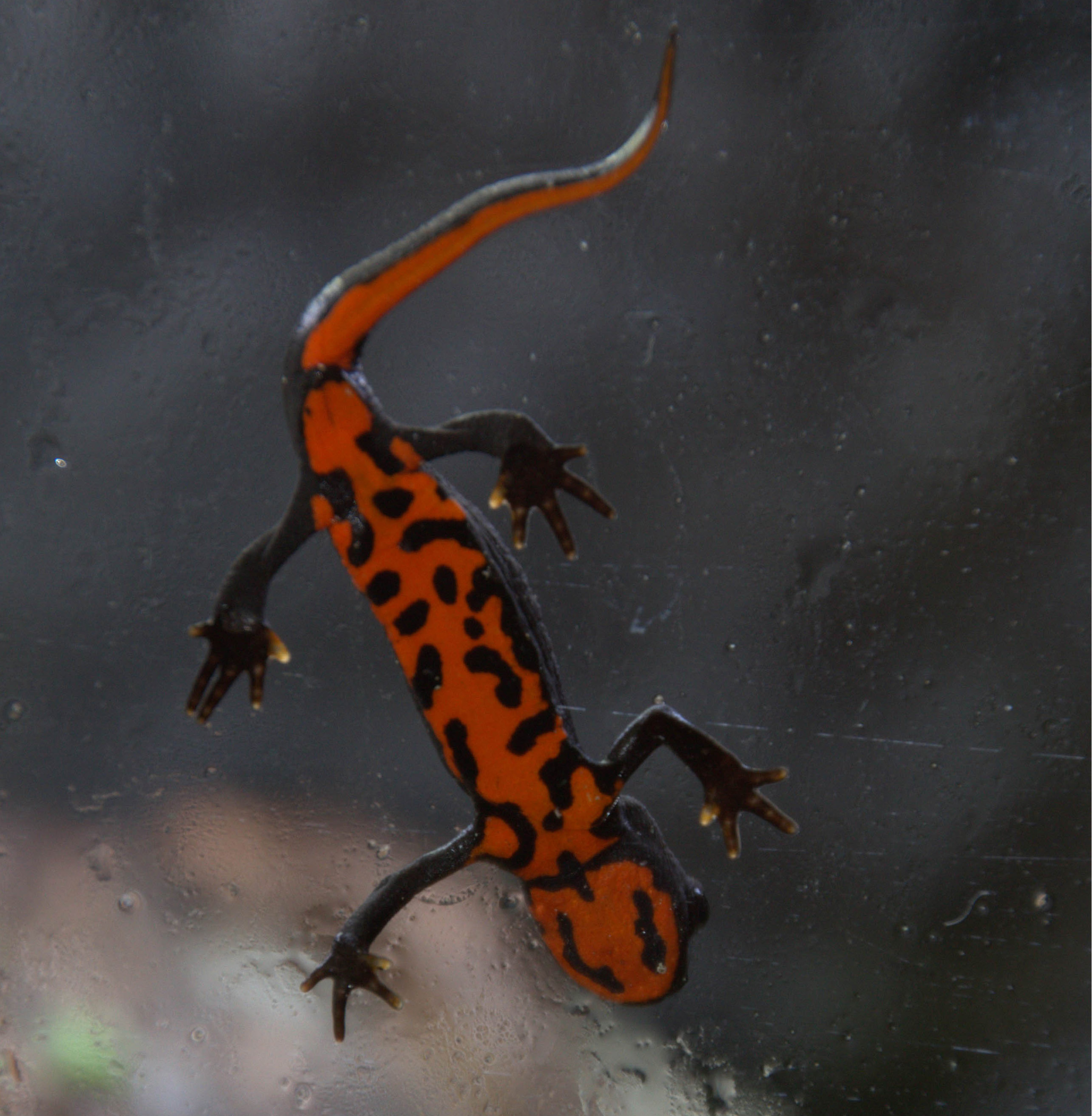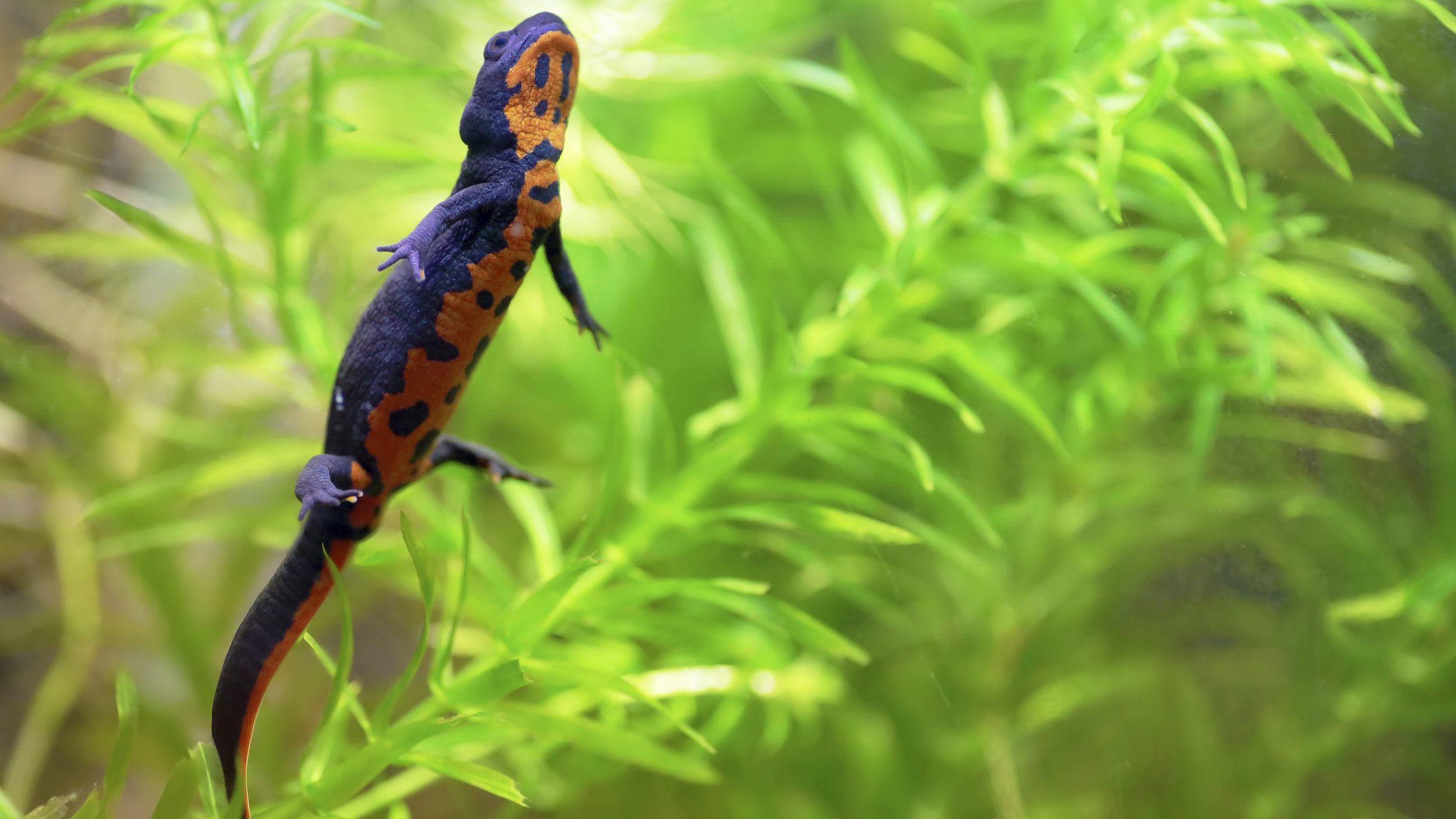Imported: A Rabies-Like Virus That Could Kill Amphibians
When it comes to pets, most people think of cats and dogs, but amphibians are also a popular choice in the U.S. Millions of live salamanders, frogs, and toads are imported every year, mostly from Asia and South America. Not surprisingly, the containers they arrive in can serve as a breeding ground for foreign pathogens. Those pathogens pose a threat not only to the animals inside, but possibly to domestic amphibians as well.

North America’s amphibian populations have sustained major losses in the last few decades, mainly due to habitat destruction, but also in part due to the introduction of diseases spread through the global food, scientific, and pet trades. Nearly a third of amphibian species are currently threatened and a new finding suggests that they may now face a new and lethal foreign pathogen in the same family as the rabies virus. Spring viremia of carp virus, or SVCV, has not previously been known to infect amphibians.
“This was totally unexpected,” says Hon Ip, head of diagnostic virology at the U.S. Geological Survey National Wildlife Health Center in Madison, Wisconsin, who helped discover the pathogen. “This is the first-ever detection of rhabdovirus in amphibians, alerting us that imported animals are susceptible to this class of viruses and need to be closely monitored for infection.”
Ip and his colleagues describe their findings in a paper published this week in the journal Emerging Microbes & Infections.
In August 2015, a large shipment of Chinese firebelly newts imported to the U.S. from Hong Kong were screened for disease. (The animals — small and striking, with blazing red-orange bellies — are a favorite in pet stores because they’re easy to care for.) When they arrived, the importer swabbed the skins of 75 surviving newts and sent the samples to the National Wildlife Health Center, along with the bodies of 11 newts that had died during shipment.
In the Madison lab, cell cultures of the swab samples tested negative for three known lethal pathogens — ranavirus and two types of fungi: Batrachochytrium dendrobatidis, or Bd, and Batrachochytrium salamandrivorans, or Bsal. But when researchers examined tissue from the dead newts under the microscope, they found the bullet-shaped rhabdovirus. Genetic analysis at the U.S. Department of Agriculture’s National Veterinary Services Laboratories in Ames, Iowa, revealed the virus’ identity: it was a Chinese strain of SVCV that has caused deadly outbreaks in Asian carp near the province where the imported newts had been collected.
In fish, SVCV sometimes causes symptoms including lethargy, discolored skin, pale gills, swelling and popped-out eyes, as well as organ damage, which often leads to death. SVCV spreads from fish to fish through infected water and mud, entering the body through the gills.
American agriculture experts are particularly worried about SVCV’s ability to infect other species of wild and farmed fish — particularly rainbow trout, tilapia, minnows, and pike — whose loss would be a huge blow to the fishing industry. But experts like Ip say it’s also important to consider how the virus might harm North America’s wild amphibians. Losing them “would mean a loss of an enormous amount of amphibian biodiversity,” Ip says.
U.S. Geological Survey experts are not sure how SVCV presents itself in amphibians: The newts in which they made the discovery were frozen and thawed several times while being analyzed. This compromised the bodies’ cell and tissue integrity, making it hard for scientists to get a full picture of SVCV’s pathology in the newts under the microscope.
Jonathan Kolby, an amphibian expert who has also screened imported pets as part of his own research on the fungus Bd, and ranavirus, said the discovery of SVCV in newts was an important finding, though he added that he wasn’t surprised. “We need to acknowledge the fact that we now live in a globalized world, an age of emerging diseases,” he said. “Agencies need more cooperation, working together systematically in order to successfully detect and respond to amphibian disease outbreaks.”
Ranavirus and Bd, both foreign pathogens, have sickened and killed thousands of amphibians across North America for decades, and Bsal, which was likely carried into Europe from Asia via the global pet trade, remains a looming threat. As a result, several months after the August 2015 shipment of newts arrived in the U.S. (but before SVCV was detected), the U.S. Fish and Wildlife Service announced a ban on the importation of 201 amphibian species to the U.S., and also on their transportation across state lines to help prevent the potential spread of disease to and within the U.S.
So the U.S. Geological Survey researchers, assisted by several other American wildlife health agencies, have turned their attention to studying SVCV in the lab, and continue to sample wild amphibians for disease.
Erica Cirino is a freelance science writer based in New York. She covers wildlife and the environment, and specializes in biology, conservation, and policy.











Comments are automatically closed one year after article publication. Archived comments are below.
Its not just only one a way ….